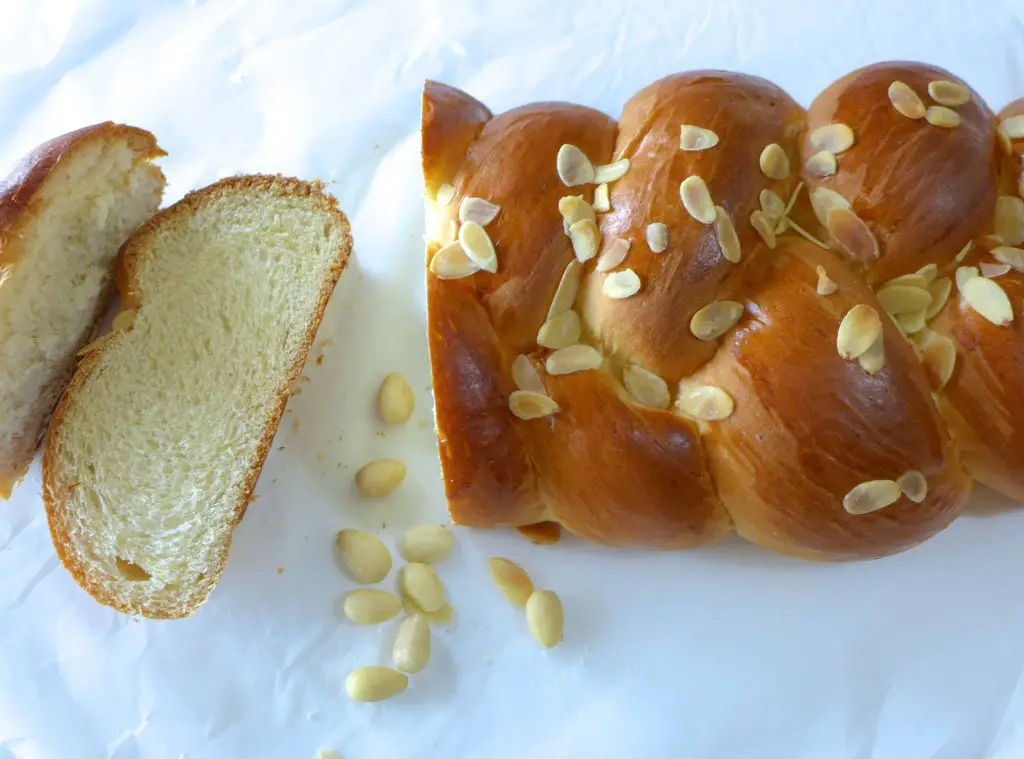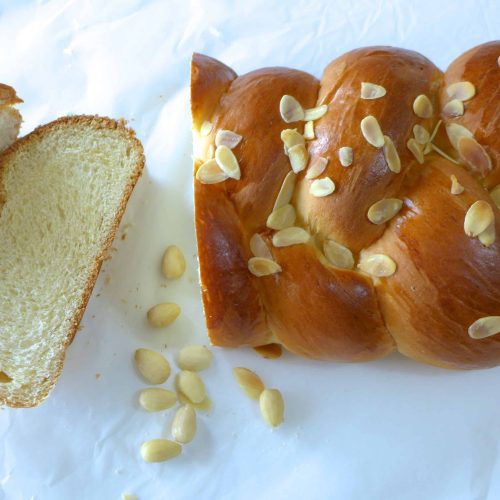
Greek Easter Bread Recipe
Hey foodie, here’s a delightful Greek Easter Bread recipe that’s bound to impress your family and friends during the Easter holiday season. When it comes to Easter, there’s nothing quite like the aroma of freshly baked Greek Easter bread, also known as Tsoureki. This delightful bread hails from Greece and is a staple during their Easter celebrations. This article will not only guide you through the process of making this delectable treat but also share a bit of its history and provide some variations to suit your taste buds.
History and Origin:
Greek Easter Bread, also known as “Tsoureki,” is a beloved tradition in Greece and among Greek communities worldwide. This sweet, braided bread is typically baked during the Easter season to celebrate the resurrection of Jesus Christ. The bread’s three-strand braid symbolizes the Holy Trinity and the red-dyed eggs, often nestled within the bread, signify Christ’s blood and the joy of life.

Greek Easter Bread Recipe
Equipment
- Mixing bowls
- Baking sheet
- Parchment paper
- Rolling Pin
- Pastry brush
- Whisk
- Plastic wrap
Ingredients
- 4 cups all-purpose flour
- 1 packet active dry yeast
- 1 cup warm milk
- 3/4 cup sugar
- 1/2 cup unsalted butter, melted
- 2 eggs
- 1 tsp vanilla extract
- 1 tsp ground mahlab (optional)
- 1/4 tsp salt
- Red-dyed eggs (for decoration)
Instructions
- Activate the Yeast: In a small bowl, dissolve the yeast in warm milk. Add a pinch of sugar, and let it sit for about 10 minutes until it becomes frothy.
- Mix Ingredients: In a large mixing bowl, combine the yeast mixture, sugar, melted butter, eggs, vanilla extract, mahlab (if using), and salt. Gradually add the flour and knead until the dough is smooth and elastic.
- First Rise: Place the dough in a greased bowl, cover it with plastic wrap, and let it rise in a warm place for about 1-2 hours, or until it doubles in size.
- Braid the Bread: Punch down the dough, divide it into three equal parts, and braid them together. Place the red-dyed eggs into the braid.
- Second Rise: Cover the braided bread and allow it to rise for another 30 minutes.
- Bake: Preheat your oven to 350°F (175°C). Brush the bread with a beaten egg and bake for 25-30 minutes or until it turns golden brown.
Video
Similar Recipes:
If you enjoy Greek Easter bread, you might also like other Greek pastries such as Baklava, Koulourakia (Greek butter cookies), and Galaktoboureko (custard-filled pastry).
Conclusion:
Now, you’re all set to create your own Greek Easter bread and savor this timeless tradition. Serve it during your Easter celebrations or enjoy it with a cup of coffee any time of the year. Enjoy your baking journey!
YouTube Video Credits:
Dimitra’s Dishes
Frequently Asked Questions About Greek Easter Bread
1. What is Greek Easter bread?
Greek Easter bread, or Tsoureki, is a sweet and braided bread traditionally baked for Easter in Greek culture. It is enriched with spices and often adorned with colorful sprinkles.
2. How does Greek Easter bread differ from regular bread?
Greek Easter bread stands out with its sweet taste, enriched dough, and the inclusion of aromatic spices like mahlab and mastiha. It is typically braided and may feature decorative elements such as colored sprinkles or almonds.
3. Is Greek Easter bread only consumed during Easter?
While a Easter staple, Greek Easter bread can be enjoyed throughout the year and isn’t exclusively reserved for the Easter season.
4. What imparts the unique flavor to Greek Easter bread?
The distinctive flavor of Greek Easter bread comes from ingredients like mahlab (ground cherry pits) and mastiha (resin from the mastic tree), providing a subtle and aromatic taste.
5. Can Greek Easter bread be made at home?
Absolutely, Greek Easter bread can be crafted at home using various recipes. It involves preparing an enriched dough, allowing it to rise, shaping it into braids, and baking until golden.
6. What does the braided shape symbolize in Greek Easter bread?
The braided shape symbolizes the Holy Trinity in Christian tradition. It is a common practice to braid the dough before baking.
7. Are there variations in Greek Easter bread recipes?
Yes, variations exist with additional ingredients like orange zest, vanilla, or different spices. Some recipes include decorative elements such as dyed eggs placed within the braids.
8. Is Greek Easter bread available in a gluten-free version?
Traditional Greek Easter bread contains gluten, but gluten-free versions using alternative flours cater to those with dietary restrictions.

Leave a Reply